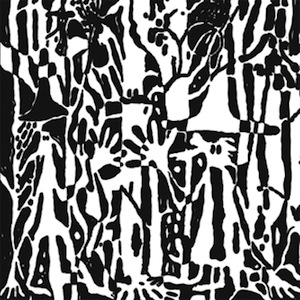Steven Tang Disconnect to Connect
Like many of his peers in the Chicago underground, Steven Tang seems to prefer to […]

Like many of his peers in the Chicago underground, Steven Tang seems to prefer to keep his profile low key. Since he first started releasing music under his own name and as Obsolete Music Technology, he’s stayed in the shadows, producing a considered style of machine-dominant music that’s as much informed by the Windy City’s low-budget analog past as it is by the melodic complexity of old-school techno. Yet Tang’s music is more than just the roughshod DJ-tool fodder such a narrow description might imply. His EPs and singles have often come off like fragmented dispatches of narrative soundtracking some larger sci-fi picture. Tang’s work has always seemed like a natural fit for the LP format, but even though he’s been turning out music since the late ’90s, he’s only now releasing Disconnect to Connect, his first full-length album. It was worth the wait.
Fundamental to the record, and much of Tang’s discography, is the familiarity of the sounds used. These are the 808 rimshots, 303 gurgles, and lush pads that form the backbone of house music. In less competent hands, tracks like the acid-happy “Some Solace” and Prescription Records-deep “Potential Light” might come off as derivative nostalgia. But that’s never the case, as his cuts instead rely on the linguistic base formed by these touchstone elements to weave a novel story, much in the way a skilled house DJ might phrase new things with old records. For instance, on the aforementioned “Some Solace,” he sketches something emotionally dense that lets its arcing bassline play out like a network of psychedelic fractals, forming a background for involved lead work played on synth. Admittedly, that doesn’t sound particularly distinct on paper, and maybe it isn’t, but what makes it work is the level of restraint employed. Like a finished jigsaw puzzle, everything has a reason for sitting where it does. It’s something that’s an almost perfect manifestation of the core aspects of house, yet it still manages to stand as a work of its own.
This is a trick that runs across the length of Disconnect to Connect, and it’s not just exclusive to the record’s tighter tracks either. On “It’s Perceived As Sound,” Tang gets loose and jazzy, with live drumming and double bass lazily creating space for meditative analog pads and a subtle flute melody. It’s the most distinct thing on the record, sounding like a mellowed riff from Paperclip People’s “Bug in the Bassbin.” The song taps into a strain of ambient dance music that has a strong showing on the LP. In fact, the album’s best moments tend to lean this way, with a few tracks drifting pretty far into more abstract realms. “Brink of Dawn” goes the furthest in this regard, closing things with a reverb-washed piece that paints a large but minimal picture with big strokes of evolving synthesis.
There’s also a strong current of music that would hit hard on the right kind of subterranean dancefloor. Some of this retains Tang’s atmospheric leanings, such as on the Detroit-flavored “Sunspot” and “Disconnect to Connect,” but the best of this stuff can be heard on the pure muscle of “Heat Bust.” There, he flattens his usual wide depth of field and makes a pure rhythm track of spiky bass and untreated drums.
More noteworthy is the way Tang utilizes the LP format to its fullest by drawing an unbroken line across the length of Disconnect to Connect. Like the tracks themselves, it feels like he’s worked subtractively, stripping out all extraneous material to leave only the bits that really need to be there. What’s left is an album of no-frills dance music presented in a format devoid of pretension. Its conservatism might not make it a hit with everyone, but for those who do enjoy this kind of thing, it would be difficult to recommend it more.

